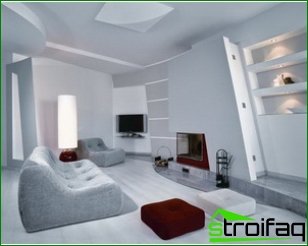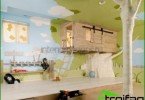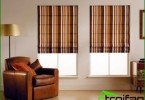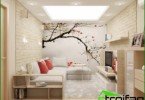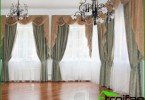How to build a frame, not only a good photographer should know. A good designer should know the same thing. It is not enough to choose parquet and wallpaper, as well as to buy lamps and furniture. It is important that the room does not become a branch of a furniture store. In this article we will talk about how to properly build a composition in the interior of a room.
All items should be connected in the interior is very logical. They should be connected in the same way as the individual elements in the picture..
Imagine that the room is a picturesque canvas, and use the rules used in building the artistic composition. You should choose what suits you best: statistics, dynamics, rhythm, dominant, symmetry or asymmetry. And use the selected option to design the space.
Composition is a kind of connection of various parts as a whole, a single space in accordance with a certain idea that makes up the form.
Symmetry
Comfort or functionality? The house always reflects the individuality of the owner and serves as a place for him to relax. That is why comfort and functionality are woven together in it. It is important to create your own story by filling your home with accessories and furniture that reflects your mood. Furniture with soft texture, rich colors, corners for work, large windows and high ceiling, plenty of light and air to get a feeling of freedom and lightness.
Symmetry is an equidistant arrangement of all those elements that are located relative to the axis you have chosen. We perceive a symmetrical composition as harmonious and orderly. The thing is that extravagant rooms with inclined walls, sharp corners and undulating surfaces do not affect the psyche in the best way. Man is inherently symmetrical. And thanks to this, a person always strives for a mirror interior.
You must remember that a balanced interior is not just two sofas installed opposite each other. It is important that you remember balance in scale and tone. You do not have to talk about symmetry if the cabinets are different in size and shape.
Asymmetry
According to its structure, asymmetry is opposite to symmetry. It is for this reason that it causes concern for any person. Residential interior is not a place for experimentation. That is why designers advise planning a symmetrical space by simply introducing asymmetric compositions into it using decor. So, you can play with scale, combining light and dark surfaces, as well as bright colors with muted shades. If you still want to create an asymmetric arrangement of furniture, do not forget that you need to highlight the center of the composition. It can be either a fireplace or a group of lamps.
Most often, an asymmetric interior is determined by the architecture of the space (ledges and rounded walls).
Rhythm
If symmetry is characterized by a calm balance of all elements, then rhythm is a movement extended to infinity. The rhythm can be set due to repeated repetition: vertical (arches, columns) or horizontal (friezes, cornices and belts). In interior design, the rhythm can be set using several pieces of furniture. An interesting trick is to break the rhythm. Place several identical white chairs, and then replace one of them with colored.
But you must remember that the rhythm is practically not perceived, and the color fades away from the viewer.
Dominant
The dominant becomes the visual center of the composition. It is she who attracts the eye, and only after that a person proceeds to consider the remaining objects. The dominant can be large-scale or color. And, although it subordinates all other objects to itself, it should be connected with other elements in the composition of the entire interior. Otherwise the whole image is just «fall apart». Therefore, the color dominant must be maintained thanks to similar shades in textiles and accessories.
Do not take the phrase «visual center» too literally. And it’s not necessary to set the dominant object in the center of the room.
Statics
Statics suggests the absence of curved surfaces and diagonal lines. This composition in the interior is based on the predominance of horizontal elements, such as heavy deep sofas and low cabinets. Thanks to this, the interior becomes stable and squat. Static interiors are described in terms such as poise and stability. More often it is a question of the spaces issued in classical style.
But a static interior does not become synonymous with a boring interior. It’s important to learn how to experiment in accessories and decor..
Dynamics
Elements of the movement, by the way, will be in the room in which noisy companies gather. Use elements with clear geometric shapes and an asymmetric arrangement to express dynamics in the interior. You will need a large amount of free space, as well as the diagonal direction of the layout of tiles or flooring. The impression of aspiration upward and lightness is created by the predominance of vertical lines..
Most often, such interiors are made in a modern style..
